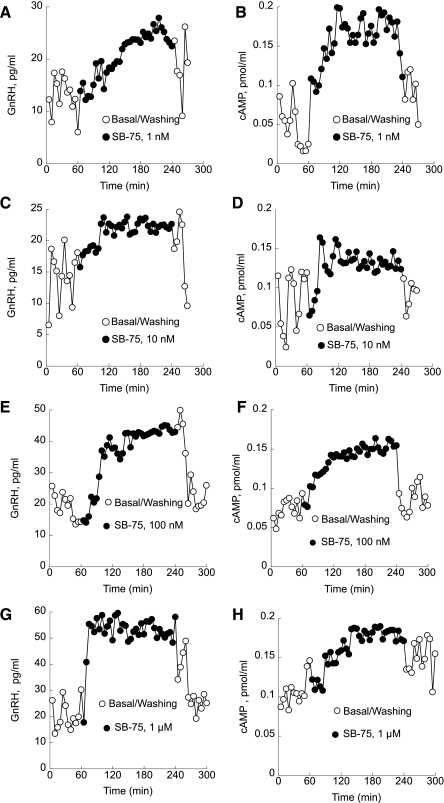Fig. 6.
Perifusion of GT1–7 cells with the GnRH antagonist SB-75 (●). A: treatment with 1 nM SB-75 abolished pulsatile GnRH release and caused a significant increase in GnRH production. B: levels of cAMP also increased significantly during the 1 nM treatment. C: basal GnRH secretion also increased during treatment with 10 nM SB-75 and returned to control levels during washout. D: levels of cAMP were also increased significantly. E: basal GnRH levels rose significantly in GT1–7 cells treated with 100 nM SB-75. F: during the washout period, the GnRH pulsatility returned to the baseline levels. cAMP production also significantly increased during 100 nM SB-75 treatment and returned to the basal level during washout. G: treatment with 1 μM SB-75 abolished pulsatile GnRH release and caused a significant increase in GnRH secretion. H: levels of cAMP also monotonically increased during treatment with 1 μM SB-75. Shown are representative traces from 5 independent experiments.

